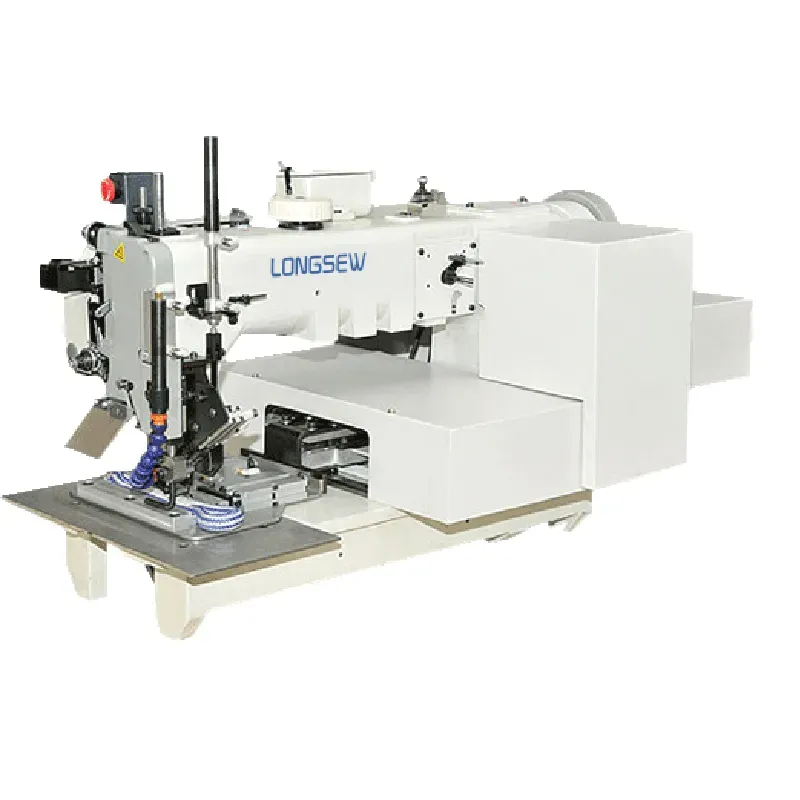FIBC Bag Shuttle Hook Sewing Machine for Efficient Production and Quality Stitching
The Evolution and Importance of FIBC Bag Shuttle Hook Sewing Machines
In the realm of industrial manufacturing, certain machines stand out for their specialized roles and efficiency. Among these, the FIBC (Flexible Intermediate Bulk Container) bag shuttle hook sewing machine has garnered significant attention in recent years. This article explores the importance, functionality, and technological evolution of these machines in the production of FIBC bags, which are vital for various sectors such as agriculture, construction, and chemicals.
Understanding FIBC Bags
FIBC bags, commonly referred to as bulk bags or big bags, are large, flexible containers designed for the safe storage and transportation of bulk materials. They are manufactured from woven polypropylene, making them lightweight yet incredibly strong. The capacity of FIBC bags can range from 500 kg to over 2000 kg, depending on the application. Their design enables efficient handling, storage, and disposal, contributing to their growing popularity globally.
The Role of Shuttle Hook Sewing Machines
The construction of FIBC bags requires precision and durability. This is where shuttle hook sewing machines come into play. These machines are specifically engineered to sew the seams of FIBC bags using heavy-duty threads, ensuring that the bags can withstand significant weight and stress during transport.
The shuttle hook design allows for smoother and more uniform stitching, making it particularly suited for the thick materials used in FIBC bags. Unlike traditional sewing machines, which may struggle with heavy fabric, shuttle hook sewing machines are built to handle multiple layers of woven polypropylene with ease and efficiency. This capability not only improves the quality of the seams but also accelerates the manufacturing process, enabling producers to meet high demand promptly.
Key Features of FIBC Bag Shuttle Hook Sewing Machines
1. Heavy-Duty Construction The machines are designed to operate with robust materials, ensuring longevity and reliability in high-volume production environments.
2. Versatile Stitching Options Many shuttle hook sewing machines offer various stitching patterns, enabling manufacturers to customize bag designs to suit specific needs.
fibc bag shuttle hook sewing machine

3. Computerized Controls Modern machines are increasingly equipped with computerized systems that allow for precise adjustments, reducing the risk of human error and increasing production efficiency.
4. Automated Features Automation in the sewing process helps streamline production lines, reducing labor costs and allowing for faster output without compromising quality.
5. Safety Mechanisms Enhanced safety protocols are built into these machines due to the heavy materials they handle, protecting operators and ensuring a secure working environment.
Technological Advancements
The advent of technology has significantly transformed the capabilities of FIBC bag shuttle hook sewing machines. With innovations such as predictive maintenance, manufacturers can now anticipate equipment failures and perform timely repairs, thereby minimizing downtime. Furthermore, advancements in materials science have also led to the availability of stronger and lighter threads, which contribute to the overall resilience of the bags.
Additionally, manufacturers are increasingly focusing on eco-friendly practices, leading to the development of sustainable production methods. The use of recyclable materials in conjunction with efficient sewing technologies not only benefits the environment but also appeals to the growing consumer base that prioritizes sustainability.
Conclusion
FIBC bag shuttle hook sewing machines play a crucial role in the production of durable, high-capacity bags essential for a myriad of industries. Their unique design, coupled with technological advancements, ensures that manufacturers can meet the demands of modern logistics and supply chains. As industries continue to evolve and seek more efficient production methods, the importance of innovative sewing technologies will undoubtedly grow, making shuttle hook sewing machines indispensable assets in the manufacturing landscape.
By investing in advanced sewing technology, manufacturers not only enhance their operational efficiency but also contribute to the broader goal of sustainable and responsible manufacturing practices, setting a precedent for future advancements in the industry.
-
Boost Production Efficiency with a Pattern Sewing MachineNewsAug.29,2025
-
Industrial Excellence with the Best Heavy Duty Sewing MachineNewsAug.29,2025
-
Precision and Power with the Best Pattern Sewing MachineNewsAug.29,2025
-
Reliable Bulk Packaging Starts With the Right FIBC Sewing MachineNewsAug.29,2025
-
Advanced Packaging Solutions: Elevate Productivity with Jumbo Bag Sewing Machine and Industrial Stitching EquipmentNewsAug.29,2025
-
High-Performance Solutions for Bulk Packaging: FIBC Sewing Machine and MoreNewsAug.29,2025
-
Maximize Efficiency with an Industrial Cylinder Arm Sewing MachineNewsAug.28,2025


























